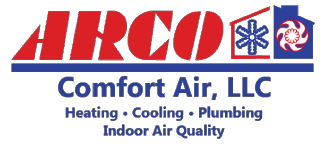We spend a large chunk of time inside our homes, and when fighting your allergy symptoms, you must start in your house. People often associate allergy flareups with spring, which is understandable given pollen’s significant effect on the sinus systems of millions. More than 50 million Americans report suffering from allergy-related problems each year, and 40% of those sufferers are children.
Allergies rank 6th on the list of common chronic illnesses in the US, costing healthcare systems a staggering $18 billion per year. If you could find a non-medical way to improve your allergy symptoms, you’d likely jump at the opportunity. Allergens, known triggers that create an allergic reaction in some people, can thrive in your home if you don’t actively work to remove them. Gaining control over your allergy symptoms requires managing these known indoor irritants. Allergen like dust mites, pests, and pet dander are some of the most common.
The EPA (Environmental Protection Agency gives three ways to improve indoor air quality:
- Prevent indoor airborne allergens
- Improve or provide adequate ventilation to your home
- Install air cleaners in your home
When the air quality in your home is improved, you can reduce your allergic responses. Your HVAC system can help improve your indoor air quality through installed air cleaner systems, or it can contribute to poor indoor air quality if your system is filled with dust, dirt, and allergens. The air moves allergens around your home, so you can fight your allergy symptoms by using your HVAC system to your advantage.
4 Ways Reduce Allergy Flare-ups by Improving Your Indoor Air Quality
Many homeowners are shocked to learn they can manage their indoor allergy flareups with minimal changes to their HVAC system. Improving the indoor air quality in your home can transform the comfort you feel when in your house.
Here are a few tips for ways you can fight allergies without medication:
Filter Cleaning: If you are concerned about indoor or seasonal allergies, keeping your filters clean will make it easy to trap particles and allergens. If your filter is clogged, those trapped allergens and dust particles will be re-circulated through your home, aggravating your sinuses and triggering allergy symptoms. Your filter plays a vital role in keeping the air in your home clean, so if it’s dirty, it makes your HVAC system work harder. If your filter is dirty, it can’t filter allergens out of your air, which will contribute to poor indoor air quality. Allergy sufferers should change their filters at least every two months, more if your home attracts dust or you have pets.
Clean Your Registers and Vents: Decreasing the amount of dust entering your HVAC system is a good first step to improving your home’s indoor air quality, which will lead to fewer allergy flareups. Running a microfiber cloth over your registers can trap dust and debris and prevent them from entering your HVAC system. Even better, have the ducts cleaned and sanitized to remove dust, dust mites, pet dander, mold, spores and other allergy triggers.
Installing Air Cleaning Purifying Devices: We start with cleaning, and then we maintain. Installing an air purifying device is a great support to clean air habits. Cleaning your vents and filters is a great first step. Combining those efforts with the powerful Pristine Air Cleaner reduces allergy symptoms and helps keep the air in your home healthier and cleaner. Pristine Air Purifiers are sold in 4 models to fit every budget, and they provide varying levels of air purification and cleaning using HEPA filters, electronic and media air cleaning technology. Depending on the unit model, these systems trap between 97-99.7% of all particles from 200 to .3 microns.
Monitoring Indoor Humidity Levels: You can protect your respiratory health and prevent allergic flareups by monitoring the humidity levels in your home. To promote respiratory health, the humidity levels in your home shouldn’t be too dry or overly humid. A healthy indoor humidity level should hoover around 40%. When the moisture, levels in your home are too high, you may find mold and mildew in your home. When the air is too dry, it’s easier for allergens to thrive and move around your home also triggering sinus, skin and lung problems.
Indoor Air Quality Experts
Now’s the time to start tackling your indoor air quality issues. As you need help, the team at Arco Comfort Air is here to help you every step of the way. Our highly trained and reliable technicians are indoor air quality experts. When your home is plagued with poor air quality issues, call in the team of indoor air quality specialists from Arco Comfort Air today. Filters, Duct Cleaning, Air Purifiers, Humidifiers and Dehumidifiers – we provide them all. Call now at (216) 230-5117 or contact us online to schedule an appointment today.
